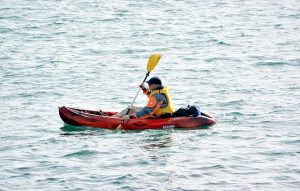Choosing the right fishing kayak requires careful consideration of design and functionality to ensure stability, performance, and comfort on the water. A well-constructed fishing kayak should feature a wide hull for enhanced lateral stability, allowing you to safely stand or cast. The hull shape and length affect both tracking and maneuverability; wider, longer Kayaks offer better stability and straight-line tracking, while shorter kayaks are more maneuverable. A V-shaped hull design can improve speed and efficiency in water travel. High-quality materials like polyethylene or carbon fiber ensure durability without adding unnecessary weight. Key features such as rod holders, ample storage options, non-slip deck pads, retractable fins, and adjustable footrests cater to the angler's needs for gear management and comfort. Ergonomic seating and a well-thought-out weight distribution further enhance the kayak's performance, making it an ideal platform for both freshwater and saltwater fishing adventures.
Exploring the vast waters with confidence and ease, a stable, easy-to-control fishing kayak transforms the angling experience. This article delves into the design elements that prioritize stability and control, ensuring a secure and comfortable environment for both the angler and their catch. From hull types to weight distribution, each aspect is scrutinized to provide insightful guidance on selecting the ideal fishing kayak. Key features that facilitate ease of use, alongside outfitting tips for optimal performance, are discussed to help you navigate the water with assurance. Whether you’re an experienced angler or a novice looking to cast your line, understanding these design principles is essential for mastering maneuverability and stability on the water. Join us as we explore the pivotal role of fishing kayak design in enhancing your outdoor adventures.
Embracing Stability and Control in Fishing Kayaks: A Design Overview
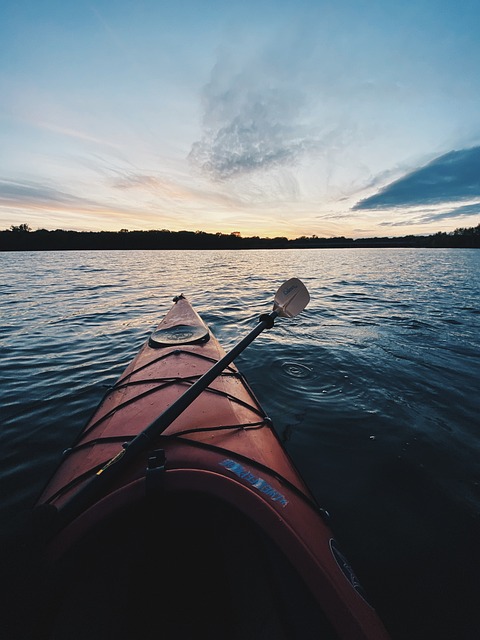
When venturing out on the water in a fishing kayak, anglers seek a vessel that offers both stability and control to ensure a comfortable and productive experience. The design of modern fishing kayaks has evolved significantly, with a focus on addressing the unique challenges faced by paddlers. These crafts are engineered with wide hulls and low profile decks to enhance primary stability, allowing fishermen to stand and cast with confidence without tipping over. The flat bottom design or slightly V-shaped hulls provide secondary stability, helping the kayak track straight while minimizing the risk of capsizing in windy or choppy conditions.
Controllability is another key aspect of fishing kayak design. Manufacturers incorporate ergonomic features such as adjustable footrests and padded seats to cater to a range of body types, ensuring paddlers can maintain an optimal seating position for extended periods. The addition of thoughtfully placed carrying handles, ample storage compartments, and rails for mounting accessories further underscores the commitment to user-centric design. Advanced materials like polyethylene or composite elements are used not only for durability but also to fine-tune the weight distribution of the kayak, making it easier to handle on land and more responsive in the water. These thoughtful design elements work in concert to provide anglers with a stable, easy-to-control platform from which to fish, whether they are casting in calm waters or navigating through mild rapids.
The Anatomy of a Stable Fishing Kayak: Hull Types and Their Benefits

A stable, easy-to-control fishing kayak is a cornerstone for anglers seeking to maximize their on-water experience. The anatomy of such a kayak begins with its hull type, which plays a pivotal role in performance and comfort. There are primarily three types of hulls to consider: the pontoon or flat hull, the V-hull, and the hybrid hull. Each hull type offers distinct advantages tailored for different fishing scenarios.
The pontoon hull, with its wide, flat design, provides exceptional stability, making it ideal for beginners and those who fish in calm waters. Its broad base ensures minimal rocking, allowing for greater ease in casting and retrieving lines without the fear of capsizing. This type of hull also offers ample space for mounting fishing gear and accessories, enhancing the angler’s capabilities and comfort during long excursions.
Conversely, the V-hull kayak is designed for speed and tracking, cutting through water with efficiency. Its narrow design and pronounced V-shape in the center make it more suitable for moving water or longer distances. The V-hull’s sharp bow slices through waves, reducing drag and improving glide. This hull type is a favorite among experienced kayak anglers who value swift navigation and straight-line paddling to reach prime fishing spots with minimal effort.
Lastly, the hybrid hull combines elements of both the flat and V-hull designs, aiming to offer a balance between stability and speed. It’s particularly useful for those who fish in diverse conditions, as it can handle calm waters with ease while also performing well in light winds and currents. The hybrid hull’s design often incorporates a rounded chine or partially planing hull for improved tracking without sacrificing the stability that novice anglers prefer. When selecting a fishing kayak, understanding the nuances of these hull types is crucial for matching the right kayak to your specific fishing environment and skill level.
Key Features for Ease of Use in Fishing Kayaks

When selecting a fishing kayak, ease of use is paramount for both novice and seasoned anglers alike. A well-designed fishing kayak should incorporate several key features to ensure a stable and manageable experience on the water. Firstly, a wide and flat bottom hull design enhances stability, allowing users to cast lines without tipping over. Additionally, a longer waterline facilitates tracking, making it easier to maintain a straight path, which is crucial when focusing on fishing rather than paddling. The cockpit size and shape also play a significant role; not too cramped to restrict movement but not too large as to compromise the kayak’s performance. Adjustable footrests cater to paddlers of various heights, ensuring comfort and optimal leverage while maneuvering.
Another vital aspect of ease-of-use is the integration of fishing-specific features. Rod holders strategically placed around the kayak allow anglers to keep their rods secure without obstructing their casting range or movement. Storage solutions, such as waterproof hatches and bungee cords, provide ample space for gear while keeping it dry and accessible. The deployment of non-slip deck pads not only offers security against shifting or falling but also provides a safe platform for standing when landing a big catch. Lastly, features like retractable fins aid in tracking without hindering the kayak’s mobility when navigating through tight spaces or launching and landing. These elements combined ensure that a fishing kayak is stable, easy to control, and tailored to the needs of the angler, making it an ideal craft for both freshwater and saltwater excursions.
Understanding Weight Distribution and Its Impact on Stability
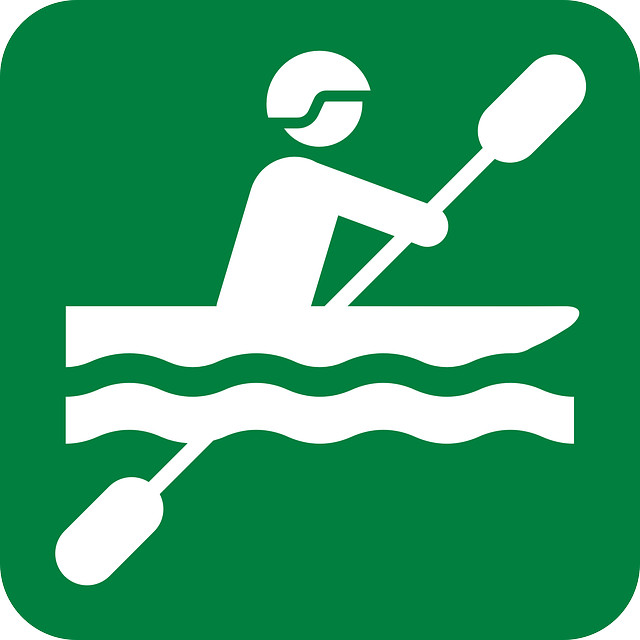
When selecting a fishing kayak, one must have a firm grasp of weight distribution and its impact on stability. Properly distributing the weight within the kayak is crucial for maintaining balance while casting or navigating through different water conditions. As anglers shift their position or cast a line, the center of gravity changes; understanding how to counterbalance these movements by adjusting cargo placement is key. For instance, heavier gear should be stored lower in the kayak to keep the vessel stable and prevent tipping. This not only enhances safety but also allows for a more focused and effective fishing experience. Additionally, the hull design of the kayak plays a significant role in its stability; wider kayaks generally provide more stability at the cost of speed, making them suitable for anglers who prioritize stability over maneuverability in varied water environments. Anglers must also consider the weight capacity and hull shape when selecting a fishing kayak to ensure it can handle their gear and size without compromising on stability, thereby providing a safe and enjoyable angling platform.
The Role of Width and Length in Enhancing Kayak Stability

When selecting a fishing kayak, the dimensions of the vessel play a pivotal role in its stability, a critical factor for both safety and comfort during angling expeditions. The width of a kayak is particularly influential in its lateral stability, allowing for confident movements and the ability to remain upright when casting or reaching for equipment without tipping over. A wider hull provides a larger surface area on the water, which, when combined with a well-designed keel, creates a stable platform even in less-than-ideal conditions such as windy environments or when standing up briefly.
The length of a fishing kayak also significantly impacts its tracking and stability. Longer kayaks tend to offer better tracking due to their increased waterline length, which means they move straighter through the water. This is particularly beneficial for covering longer distances or maintaining position over fishing hotspots. However, while longer kayaks are generally more stable, they can be less maneuverable than shorter ones. Therefore, the best fishing kayak for a user will balance width and length according to their specific needs, skill level, and the types of water they plan to navigate. A carefully chosen length-to-width ratio ensures that the kayak is both responsive and stable, providing a safe and productive environment for the angler.
Choosing the Right Kayak Hull Design for Your Fishing Needs
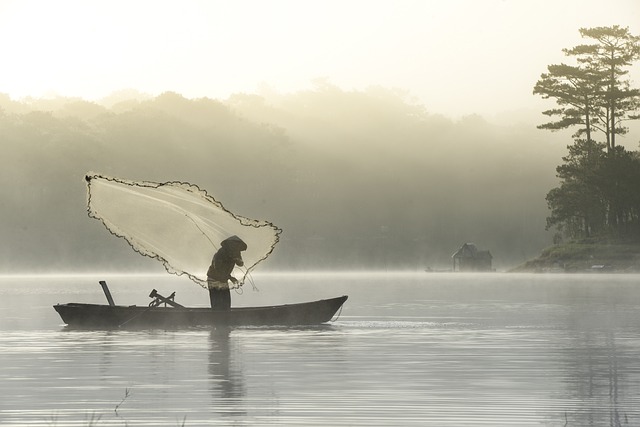
When selecting a fishing kayak, the hull design is a critical factor that can significantly influence your angling experience. A well-chosen hull not only offers stability for casting and standing but also impacts tracking and maneuverability in various water conditions. Anglers primarily encounter two types of kayak hull designs: the flat hull and the V-hull, each with its unique advantages.
A flat hull design provides remarkable stability, making it ideal for beginners or those who prefer to stand while fishing. This design offers a wider platform that resists rocking, allowing for more confident movement and the ability to cast without tipping. Flat hulls are typically found in sit-on-top kayaks, which also offer easy entry and exit, as well as ample space for gear storage. They excel in calm waters where tracking is less of a concern than stability.
Conversely, the V-hull design is characterized by its V-shaped cross-section, which offers superior tracking and speed. This hull slices through water efficiently, making it an excellent choice for longer distances and moving water. The deeper center channel helps in maintaining a straight course without excessive effort. Fishing kayaks with a V-hull are often favored by experienced anglers who need to cover more ground or navigate narrow streams and rivers. Additionally, the pronounced sides of the V-hull can provide more dry storage space below the deck, which is beneficial for those who venture into windier conditions.
In choosing between these hull designs, consider the type of fishing you’ll be doing and the environments you’ll be navigating. A flat hull may be more forgiving if you plan to fish in sheltered bays or lakes where stability is paramount. On the other hand, a V-hull kayak could be the better option for open waters or rivers with currents, where tracking and speed can make a difference in your fishing success. Always ensure that the hull design aligns with your comfort level, as well as the specific demands of your angling adventures.
Outfitting Your Fishing Kayak: Components for Steady Performance

When outfitting your fishing kayak for steady performance, it’s crucial to focus on components that contribute to stability and control. A well-equipped fishing kayak not only enhances the angler’s experience but also ensures safety on the water. The hull design of a fishing kayak plays a pivotal role in its stability; wider hulls typically offer more stability, making them ideal for anglers who may spend extended periods standing or casting. Paddlers should consider a kayak with a flat bottom or a keeled bottom designed to resist tipping without overly impeding maneuverability.
In addition to the hull design, strategic placement of accessories and gear is essential for optimal performance. A balanced layout with a center-mounted fishing seat can provide a pivot point that aids in maintaining balance during casting or reeling in a catch. Furthermore, the integration of a reliable rudder system can greatly assist in steering through wind or currents, maintaining direction without excessive effort. High-quality paddles with an adjustable length can also contribute to easier handling and control, especially when navigating tight spaces or fighting a fish. By carefully selecting each component and considering how it will interact with the others, anglers can tailor their fishing kayak to deliver steady performance that meets their specific needs on the water.
Mastering Maneuverability Without Sacrificing Stability on a Fishing Kayak
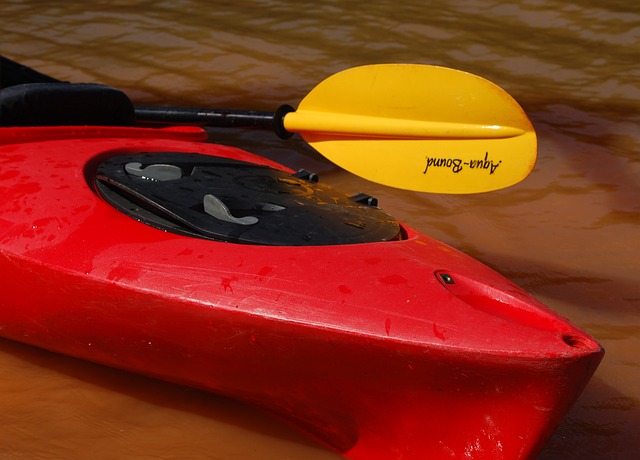
When venturing into waters for a day of fishing, a fishing kayak that offers both stability and maneuverability is paramount to an enjoyable experience. The design of a stable fishing kayak is a delicate balance, where too much stability can hinder agility, while excessive maneuverability without stability can lead to instability and a risk of capsizing. Modern fishing kayaks are engineered with this dichotomy in mind, incorporating wider hulls for greater primary stability, which provides the angler with the confidence to stand and cast without tipping over. Yet, these kayaks also feature a sleek design and responsive rudders or keels that allow for effortless turns and navigational precision when tracking through fish-rich waters.
The hull shape of a fishing kayak plays a crucial role in its handling characteristics. A V-shaped bottom can slice through waves with minimal resistance, enhancing speed and making it easier to move around the kayak without sacrificing stability. Additionally, the use of advanced materials such as polyethylene or carbon fiber composites not only contributes to the durability of the kayak but also influences its weight distribution, further improving its performance on the water. Features like adjustable footrests and ergonomic seating allow anglers to find their ideal position for both comfort and control during those critical moments when a fish takes the bait. With thoughtful design elements and attention to detail, today’s fishing kayaks offer users a platform that is both stable enough for safety and responsive enough to navigate through various fishing scenarios with confidence and ease.
